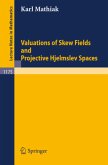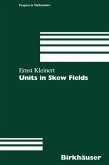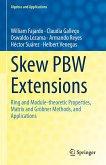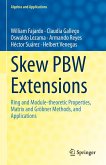Non-commutative fields (also called skew fields or division rings) have not been studied as thoroughly as their commutative counterparts and most accounts have hitherto been confined to division algebras, that is skew fields finite-dimensional over their centre. Based on the author's LMS lecture note volume Skew Field Constructions, the present work offers a comprehensive account of skew fields. The axiomatic foundation and a precise description of the embedding problem are followed by an account of algebraic and topological construction methods, in particular, the author's general embedding theory is presented with full proofs, leading to the construction of skew fields. The powerful coproduct theorems of G. M. Bergman are proved here as well as the properties of the matrix reduction functor, a useful but little-known construction providing a source of examples and counter-examples. The construction and basic properties of existentially closed skew fields are given, leading to an example of a model class with an infinite forcing companion which is not axiomatizable. The treatment of equations over skew fields has been simplified and extended by the use of matrix methods, and the beginnings of non-commutative algebraic geometry are presented, with a precise account of the problems that need to be overcome for a satisfactory theory. A separate chapter describes valuations and orderings on skew fields, with a construction applicable to free fields. Numerous exercises test the reader's understanding, presenting further aspects and open problems in concise form, and notes and comments at the ends of chapters provide historical background.








